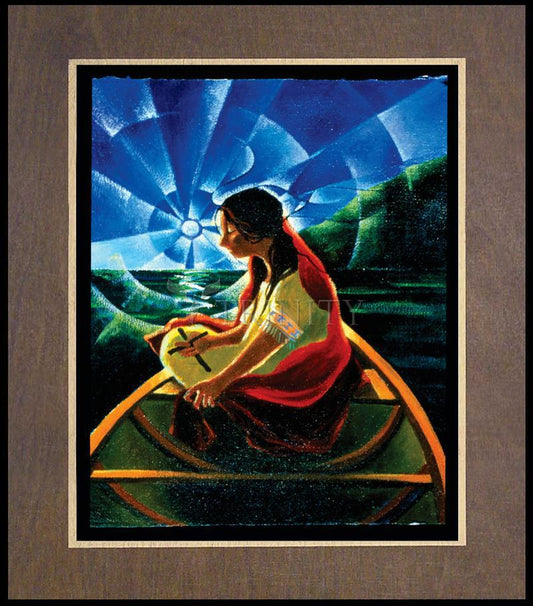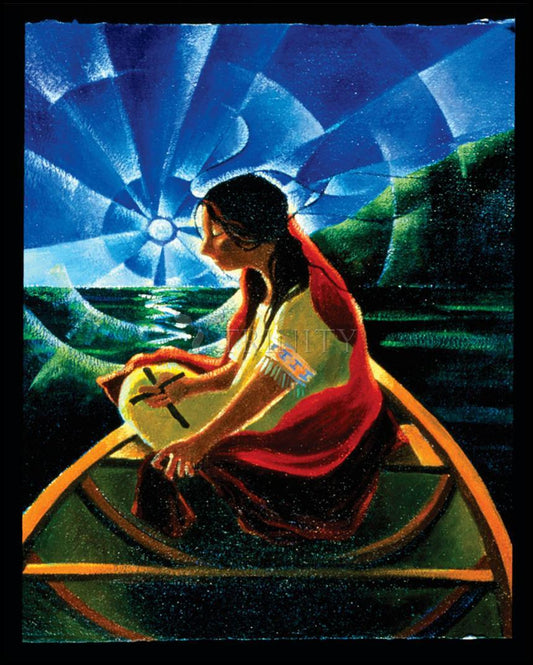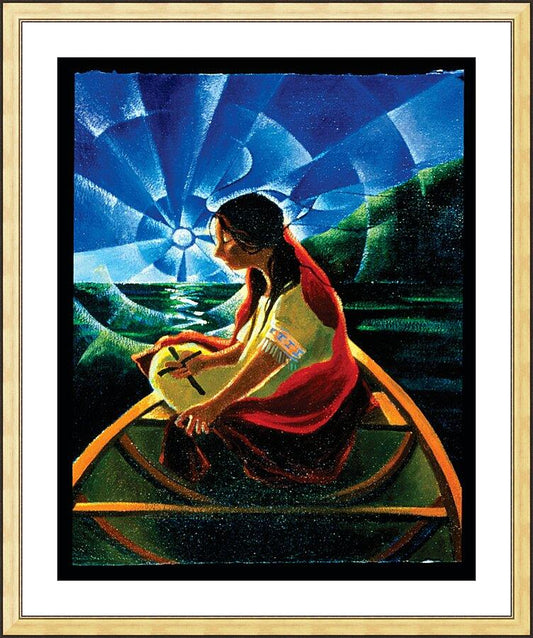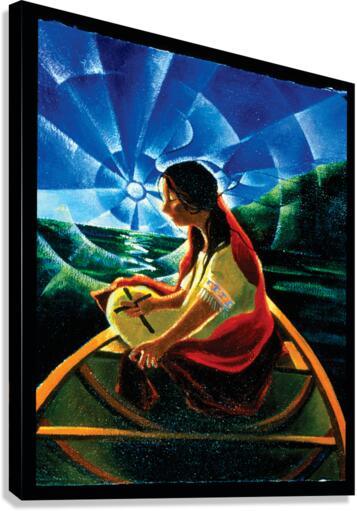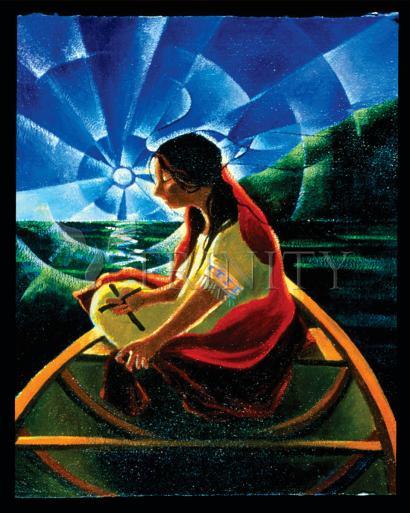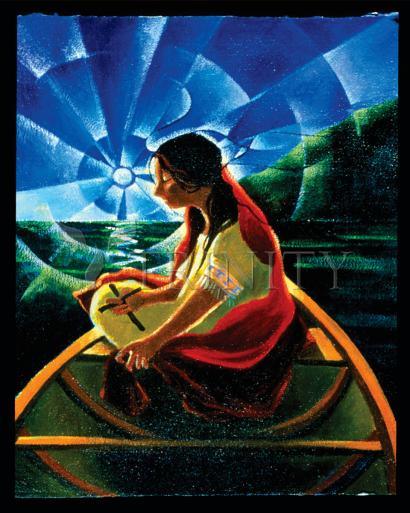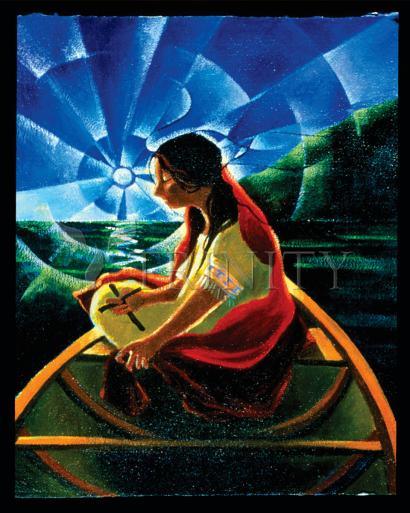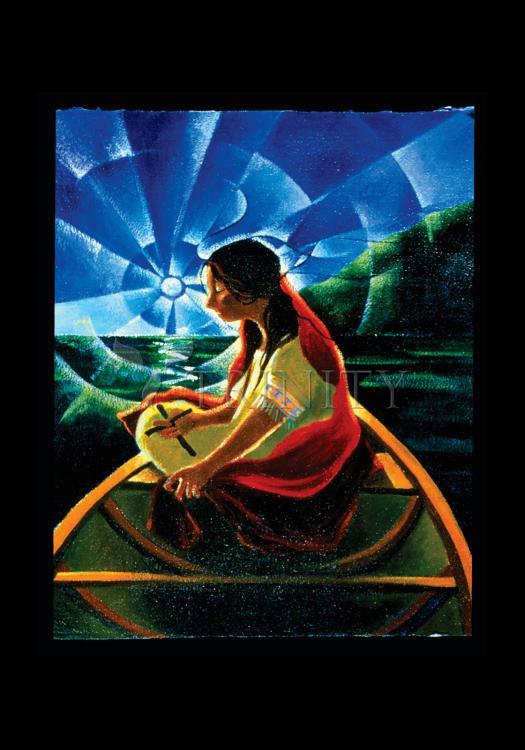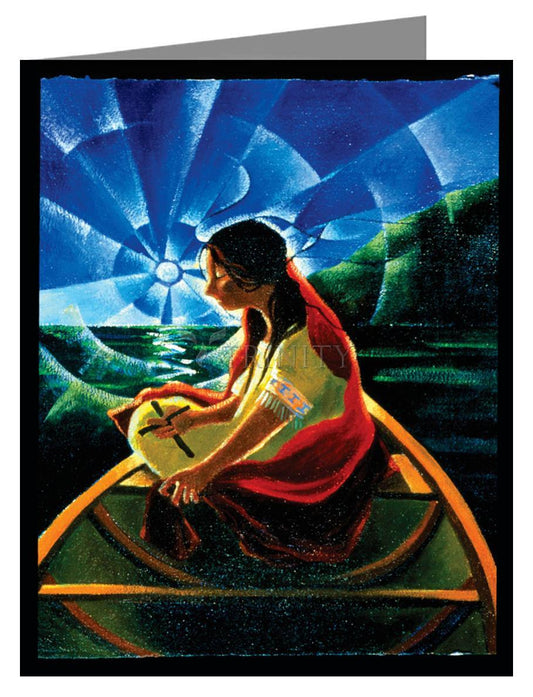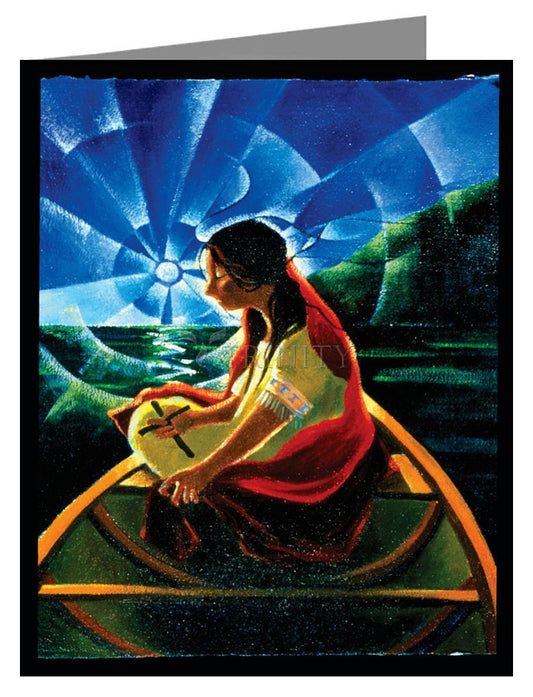Kateri Tekakwitha, also called "Lily of the Mohawks," is considered the Catholic patroness of ecology and the environment. She was born in 1656 in what now is upstate New York, on the upper portion of Lake Ontario and near the modern Canadian border. Her father was a Mohawk chief, and her mother was an Algonquin who had been baptized as a Catholic prior to being captured by Mohawks in warfare. It was not unusual in Native American culture to wait to name a baby until the child showed some distinguishing characteristic, and the name of their infant would evolve with time.
In 1660, when she was four, smallpox spread through her village and took the lives of her mother, father, and younger brother. She survived, but was left weaker, scarred, and partially blind. Thus, she was named Tekakwitha, which means "The One Who Walks Groping for Her Way." Her uncle, also a Mohawk chief, and two of her aunts adopted her, and a new village was formed five miles away from the contagion.
It also was customary in her culture to arrange future marriages when children were about age 8. Tekakwitha's adoptive parents paired her up with a young boy, but she had already decided upon dedicating her life to God. Her uncle, though, was fervently against Christianity because the European settlers who subscribed to the religion had brought smallpox and other deadly diseases into their village.
He did not force her into marriage, however, and she grew up helping her aunts in the fields. Like all American Indians who engaged in agriculture, women were the primary farmers; Mohawk women communally grew corn, beans, and members of the squash family, including pumpkins. Tekakwitha picked roots in the forest that were used for medicines and dyes, learned to craft warm winter clothing from animal skins, and helped care for their communal home, a traditional longhouse shared by several families.
After Catholic missionaries came to the village and began building a chapel, Tekakwitha began secretly studying Christianity. Eventually her uncle allowed her to become a Christian as long as she promised not to leave the village. Her conversion resulted in ridicule from most family and friends, and it became worse when she was baptized on April 18, 1676.
At 21, it was extremely unusual to be unmarried -- and she showed further independence by taking the Christian name "Catherine," which is "Kateri" in French. Because of her beliefs, she did not work on Sundays, and because she did not work, she was refused food and was stoned by indignant Mohawks. The increasing hostility of her village towards her and her new religion led Kateri to flee her home in 1677.
She journeyed for two months, doing much of her canoeing on the St. Lawrence River in the dark of night. In the day, she slept and gathered her food from the wilderness. After a trek of some 200 miles, Kateri finally arrived at the Catholic mission of St. Francis Xavier at Sault Saint-Louis near Montreal. At the mission she taught prayers to young children and helped care for the poor and the sick. She had artistic inclinations and loved to make crosses out of sticks.
Kateri's health had always remained poor after surviving smallpox, and in 1680, at age 24, she died. She never fulfilled her dream of opening a convent for Native American sisters. It was said that the facial scars Kateri had from smallpox miraculously disappeared immediately upon her death. Two Jesuit priests witnessed this miracle, an important factor in Catholic standards for sainthood.
In 1980, 300 years after her death, Pope John Paul II beatified Kateri. Bishop Stanislaus Brzana of upstate New York said: "Kateri was a child of nature. Her sainthood will raise the minds and hearts of those who love nature and work in ecology." She is the first Native American to be beatified and is currently awaiting canonization. Catholics have erected a number of monuments to her, including one as far away as San Francisco.
Born: 1656 at Osserneon (Auriesville), modern New York, USA
Died: April 17, 1680 at Caughnawaga, Canada
Venerated: 1943
Beatified: June 22, 1980 by Pope John Paul II



